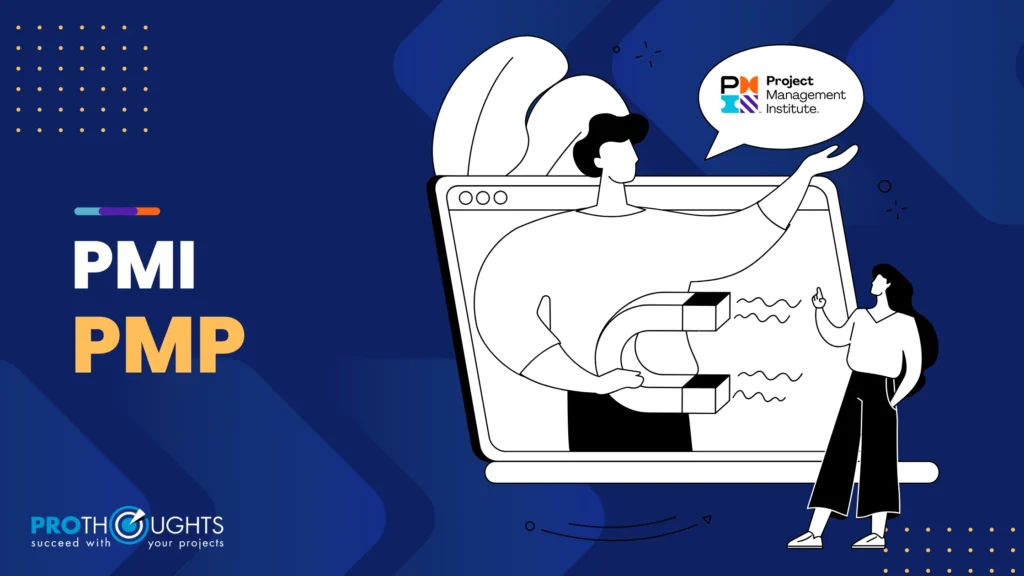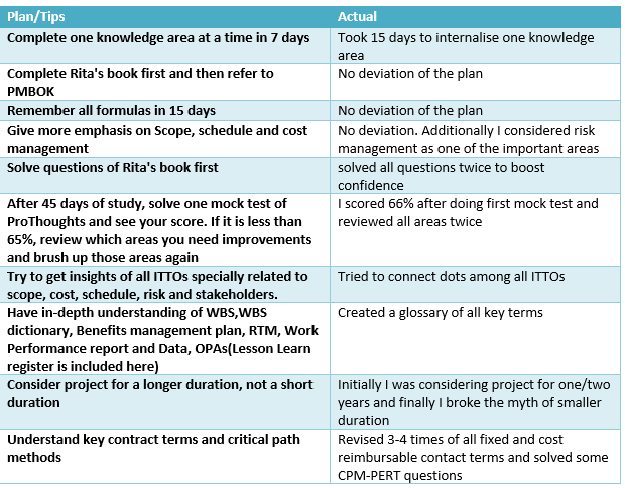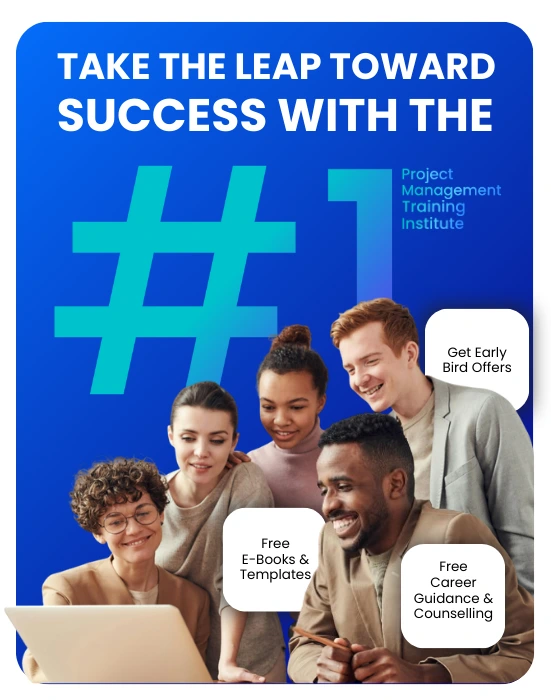Last winter I decided to go for PMP certification though I know it is not an easy cake to have it. But I am determined to get it by mid-2020. You need proper guidance and an in-depth understanding of all knowledge areas to crack the PMP exam. First, I started searching for a training institute to guide me and show me the path to success. My goal was to select a critical path with no float to get a crown of PMI PMP. Second, I searched on Google to find out the best PMP institutes and got confused to find out to choose the best one. Additionally, every institute claimed to be the best in terms of quality of training and study materials. Finally one of my close friends told me about ProThoughts and its unique USP to clear PMP. I called up Mr Jeff and got basic information about PMI PMP. After that, I had no second thought than to select ProThoughts to select my critical path (CP) of success.
Pre-Training and Post-Training Approach
I had received Pre Workshop training materials before my actual training got started. Going through the pre-workshop training materials boosted my confidence, and I felt I could clearly understand the PMP. Before going for training I started understanding key terms being used in PMP. In addition, after four days of training by our trainer, Mr Souvik, I determined to attach three letters with my name. Also, let me give you some secret tips for success. Before going for that, I would like to mention that there is no heuristic approach to remembering all concepts in four days. This training along with materials gives you a chance to make your project management plan. Furthermore, you need to create your business case and benefits before developing a project management plan for cracking the PMP exam.
Three Factors/Levers of Cracking PMP
- Rita Mulcahy book
- PMBOK@6th Edition with agile
- Prothoughts training materials
What was my Plan and Strategy?
One thing was very clear to me despite online and offline OPAs, there is no shortcut to clear this exam. Hence I have prepared a plan or secrets which I am going to share with all of you.
Frequent Errors/Pitfalls at the time of thinking
I experienced some misunderstandings while solving sample questions which I would like to highlight here:
- Ignoring quality and risk aspects while completing one process area. Always consider the risk aspect while making any changes in scope, cost, and schedule.
- Don’t think solution in the way we solve it in our office. Think from the project management approach as specified by PMI. Also in this agile world, tailor-made approaches are the preferred choice
- Don’t consider gold plating even customer demands
- Deal with the problem with the highest negative impact first. Don’t try to solve all problems in one go
- Don’t think Control comes before close and hence Control Scope will come after Validate scope. Also, control scope is your primary responsibility so that the project won’t be deviated from its original scope.
- Though “Identify Stakeholders “comes in initiating process groups, it doesn’t mean that you never identify stakeholders in other process groups. You need to identify any new stakeholders throughout the project.
- Remember that Managing changes to the deliverables, project documentation, and the project management plan- is part of Perform Integrated Change Control.
- Process defining how the formal acceptance of the completed project deliverables will be obtained – Plan Scope Management (Scope Management Plan)
- Monitoring the implementation of the approved changes has happened in monitor and control project work
- Providing a letter to the seller with the formal notice that the contract has been completed – control procurements. Most people consider it in the closing phase.
Final Tips for the Exam
- Read PMBOK and RMC twice before appearing for the exam
- Create your notes
- Internalise ITTOS rather than remembering
- Understand the project life cycle suitable for your project and every component of the project management plan(10 docs+3 baselines+6 additional components)
- Brush up all formulas of the cost and schedule chapter
- Remember last 2 lines of the question are very important.
- Differentiate between qualitative risk and quantitative risk
- Perform quality control before validating the scope
- Provide ample time before sitting for the exam as both cost and money are involved in this exam
Strategy on the Day of the exam
- Be optimistic rather than pessimistic
- Go for Pearson VU test center rather than OPT mode
- Quickly go through all ITTOs in 15 minutes.
- Be calm and quiet. Think you clear the exam with great pride.
- Give 1 minute for every question and reserve some time for review. So, if you are not sure about any answer, please mark that for later review. Dont waste time
- Take 10-minute allotted breaks to refresh your memory and be rejuvenated. Also, people think that a break might delay the rhythm of the exam. It is not true. Break speeds up your thinking speed.
Conclusion
The journey to PMP certification is demanding but achievable with the right preparation and strategy. By leveraging the resources and tips shared, you can navigate the challenges and emerge successfully with the coveted PMP designation. However, I am sure you can crack the exam if you join with ProThoughts and listen to well-defined tricks. So, enroll in the PMP certification training program and set yourself on the path to success. Start your journey to becoming a certified Project Management Professional!


